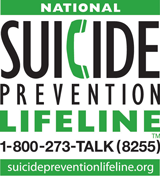“Hope is being able to see that there is light despite all of the darkness.” – Desmond Tutu
Suicide1 is a serious public health problem that can have lasting harmful effects on individuals, families, and communities. While its causes are complex and determined by multiple factors, the goal of suicide prevention is simple: Reduce factors that increase risk (i.e., risk factors) and increase factors that promote resilience (i.e., protective factors). Ideally, prevention addresses all levels of influence: individual, relationship, community, and societal. Effective prevention strategies are needed to promote awareness of suicide and encourage a commitment to social change. Jay Harold wrote this post, “15 Risk Factors & Ways to Prevent Suicide,” to provide information to deal with a tragedy that killed 47, 173 in 2017 according to the CDC2.
Suicide is the 16th leading cause of death for Black Americans in 2014 according to data from the National Office of Vital Statistics3 . The video below talks about some risk factor for suicide.
Risk Factors for Suicide4
A combination of individual, relationship, community, and societal factors contribute to the risk of suicide. Risk factors are those characteristics associated with suicide—they might not be direct causes.
Risk Factors
- A family history of suicide
- A family history of child maltreatment
- Previous suicide attempt(s)
- History of mental disorders, particularly clinical depression
- History of alcohol and substance abuse
- Feelings of hopelessness
- Impulsive or aggressive tendencies
- Cultural and religious beliefs (e.g., belief that suicide is a noble resolution of a personal dilemma)
- Local epidemics of suicide
- Isolation, a feeling of being cut off from other people
- Barriers to accessing mental health treatment
- Loss (relational, social, work, or financial)
- Physical illness
- Easy access to lethal methods
- Unwillingness to seek help because of the stigma attached to mental health and substance abuse disorders or suicidal thoughts
Protective Factors for Suicide
Protective factors buffer individuals from suicidal thoughts and behavior. To date, protective factors have not been studied as extensively or rigorously as risk factors. Identifying and understanding protective factors are, however, equally as important as researching risk factors.
Protective Factors
- Effective clinical care for mental, physical, and substance abuse disorders
- Easy access to a variety of clinical interventions and support for help-seeking
- Family and community support (connectedness)
- Support from ongoing medical and mental health care relationships
- Skills in problem-solving, conflict resolution, and nonviolent ways of handling disputes
- Cultural and religious beliefs that discourage suicide and support instincts for self-preservation
(U.S. Public Health Service 1999)
Suicide and Suicide Attempts Take an Enormous Toll on Society5
- Suicide is the 10th leading cause of death among Americans.
- Nearly 45,000 people died by suicide in 2016.
- An estimated 1.3 million people made a suicide attempt in the past year.
- Almost 10 million adults reported having serious thoughts about suicide in the past year.
- Suicide and self-harm injuries cost society about $70 billion a year in combined medical and work loss costs.
Survivors
- A survivor of suicide is a family member or friend of a person who died by suicide.
- Surviving the loss of a loved one to suicide is a risk factor for suicide.
- Surviving family members and close friends are deeply impacted by each suicide and experience a range of complex grief reactions, including, guilt, anger, abandonment, denial, helplessness, and shock.
- No exact figure exists, but it is estimated that between 6 and 32 survivors exist for each suicide, depending on the definition used.
- According to another estimate, approximately 7% of the U.S. population knew someone who died by suicide during the past 12 months.

Suicide is a serious but preventable public health problem that can have lasting harmful effects on individuals, families, and communities. While the causes of suicide vary, suicide prevention strategies share two goals: to reduce factors that increase risk and to increase factors that promote resilience or coping. Prevention requires a comprehensive approach that occurs at all levels of society—from the individual, family, and community levels to the broader social environment. Effective prevention strategies are needed to promote awareness of suicide, while also promoting prevention, resilience, and a commitment to social change.
CDC’s Preventing Suicide: A Technical Package of Policies, Programs, and Practices[6 MB, 62 Pages, 508] highlights strategies based on the best available evidence to help states and communities prevent suicide. The strategies and their corresponding approaches are listed in the table below.
Approach |
|
| suicide strategic supports |
|
| Strengthen access and delivery of suicide care |
|
| Create protective environments |
|
| Promote connectedness |
|
| Teach coping and problem-solving skills |
|
| Identify and support people at risk |
|
| Lessen harms and prevent future risk |
|

Suicide Prevention Resources
- National Strategy for Suicide Prevention
This revised national strategy emphasizes the role every American can play in protecting friends, family members, and colleagues from suicide. It also provides guidance for schools, businesses, health systems, clinicians, and many other sectors. This guidance takes into account nearly a decade of research and other advancements in the field since the last strategy was published. - Strategic Direction for the Prevention of Suicidal Behavior: Promoting Individual, Family, and Community Connectedness to Prevent Suicidal Behavior[507 KB, 12 Pages, 508]
This document describes a vision for CDC’s work to prevent fatal and nonfatal suicidal behavior. Our key strategy is promoting individual, family, and community connectedness. - Programs and Practices: Suicide Prevention Resource Center (SPRC)
This registry, funded by the Substance Abuse and Mental Health Services Administration (SAMHSA), identifies reviews, and disseminates information about best practices that address specific objectives of the National Strategy for Suicide Prevention. - SAMHSA’s National Registry of Evidence-Based Programs and Practices (NREPP)
NREPP is a searchable online registry of mental health and substance abuse interventions that have been reviewed and rated by independent reviewers.
Need Help? Know Someone Who Does?
 Contact the National Suicide Prevention Lifeline
Contact the National Suicide Prevention Lifeline
- Call 1-800-273-TALK (1-800-273-8255)
- Use the online Lifeline Crisis Chat.
Both are free and confidential. You’ll be connected to a skilled, trained counselor in your area.
For more information, visit the National Suicide Prevention Lifeline.
Jay Harold hopes you enjoyed this post, “15 Risk Factors & Ways to Prevent Suicide.” Based on the 2016 National Survey of Drug Use and Mental Health it is estimated that 0.5 percent of the adults aged 18 or older made at least one suicide attempt. This translates to approximately 1.3 million adults. Adult females reported a suicide attempt 1.2 times as often as males.
Please Share it and read more about Jay Harold here. Please take this advice from Muhammad Ali and give back to others. “Service to others is the rent you pay for your room here on earth.”
Bibliography
- https://www.cdc.gov/violenceprevention/suicide/index.html
- https://afsp.org/about-suicide/suicide-statistics/
- https://www.cdc.gov/nchs/data/nvsr/nvsr65/nvsr65_05.pdf (Table D, Pg. 12)
- https://www.cdc.gov/violenceprevention/suicide/riskprotectivefactors.html
- https://www.cdc.gov/violenceprevention/suicide/consequences.html



